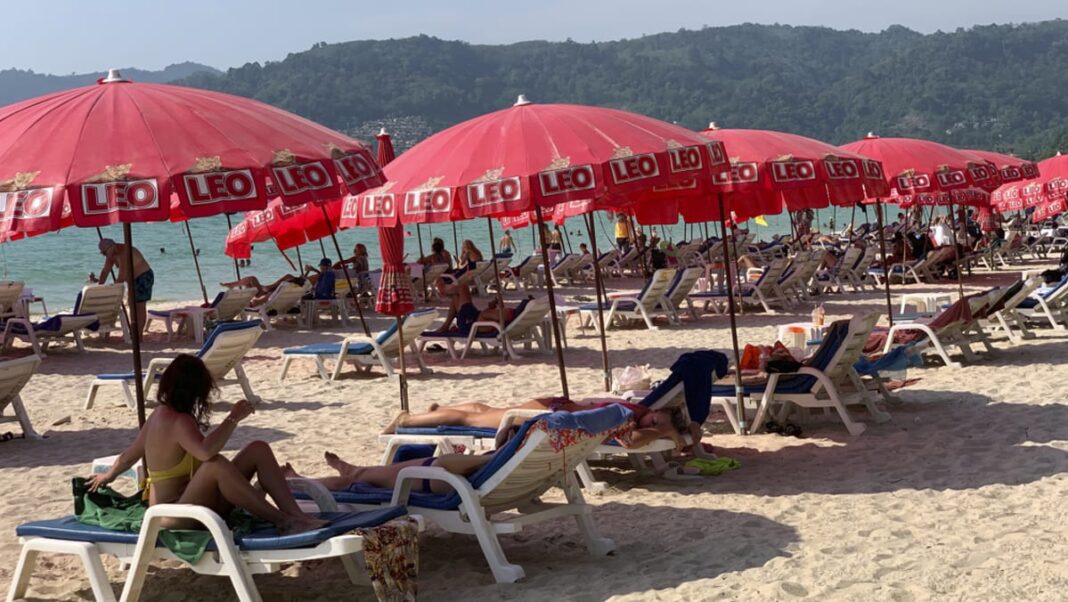Title: Tragic Incidents Raise Concerns Over Massage Safety in Thailand
In a shocking turn of events, a Singaporean man tragically passed away in Phuket after a massage session at Patong Beach during his holiday. This incident has sparked concerns over the safety of massage services in Thailand, especially after a similar incident involving a Thai singer who also lost her life after multiple massage sessions. Let’s delve deeper into these heartbreaking occurrences and explore the implications they raise.
The Story So Far: A Tale of Tragedy and Concern
As the sun set on a tranquil day in Phuket, Mr. Lee Mun Tuk, a 52-year-old Singaporean, sought relaxation at a massage shop in the bustling tourist hub of Patong Beach. Little did he know that this ordinary indulgence would turn into a nightmare. Following a 45-minute "oil body massage," Mr. Lee stopped breathing abruptly, sending shockwaves through those present. Despite desperate attempts by the staff to revive him, Mr. Lee never regained consciousness.
A Closer Look at the Tragic Events
Mr. Lee’s wife, devastated by the sudden loss, shared that her husband had pre-existing health conditions, indicating that the tragic outcome may have been exacerbated by these underlying issues. In a distressing parallel, a Thai singer, Chayada Prao-hom, met a similar fate after receiving three massages within a month, ultimately succumbing to a blood infection and brain swelling. These incidents shed light on the potential risks associated with massage therapies, prompting a closer examination of safety measures in the industry.
The Safety of Massage Therapies: A Critical Evaluation
While massages are generally considered safe, rare cases of severe side effects have been reported, including blood clots, nerve injuries, and bone fractures. Vigorous massage techniques, such as those involving neck twisting, have been linked to adverse outcomes, underscoring the importance of regulation and oversight in the industry. Authorities are now investigating the establishments involved in these tragedies to ensure compliance with safety standards and licensing requirements.
Conclusion
The untimely deaths of Mr. Lee and Ms. Chayada serve as sobering reminders of the potential risks associated with massage therapies. As we mourn the loss of these individuals, it is crucial to prioritize safety and accountability in the provision of such services. By raising awareness and implementing stringent regulations, we can strive to prevent similar tragedies in the future and uphold the well-being of those seeking relaxation and rejuvenation through massages.
Frequently Asked Questions
1. What are the main concerns raised by the recent incidents in Thailand?
The recent incidents in Thailand have raised concerns about the safety and regulation of massage services in the country.
2. Are massages generally considered safe?
Yes, massages are generally considered safe, but there have been rare cases of serious side effects.
3. What are some of the risks associated with massages?
Some risks associated with massages include blood clots, nerve injuries, and bone fractures, especially with vigorous techniques.
4. How can massage establishments ensure safety for their clients?
Massage establishments can ensure safety by following proper protocols, employing trained professionals, and adhering to licensing requirements.
5. What steps are authorities taking to address these incidents?
Authorities are investigating the establishments involved to ensure compliance with safety standards and licensing regulations.
6. How can individuals protect themselves when seeking massage services?
Individuals can protect themselves by choosing reputable establishments, communicating any health concerns, and being aware of the risks associated with different massage techniques.
7. What are the common signs of a potentially unsafe massage session?
Signs of a potentially unsafe massage session include excessive pressure, discomfort, and persistent pain during or after the treatment.
8. Are there any preventive measures individuals can take before getting a massage?
Individuals can inform their massage therapist about any health conditions, allergies, or sensitivities they have to ensure a safe and tailored treatment.
9. What role do regulations play in ensuring the safety of massage services?
Regulations help set standards for training, hygiene, and ethics in the massage industry, safeguarding the well-being of both clients and practitioners.
10. How can consumers advocate for safer massage practices?
Consumers can advocate for safer massage practices by supporting reputable establishments, reporting any concerns to relevant authorities, and staying informed about industry developments.
Tags: massage safety, Thailand, tragic incidents, regulation, wellness, relaxation

